Often a rest-and-recovery period after strenuous activity is synonymous with vegging out in front of the television, slamming down protein bars and drinking lots of water. Complete stillness might be the doctor’s orders after some athletic activities. But for most of us, the recovery process begins with every step we take post-activity, whether inside or outside the house.
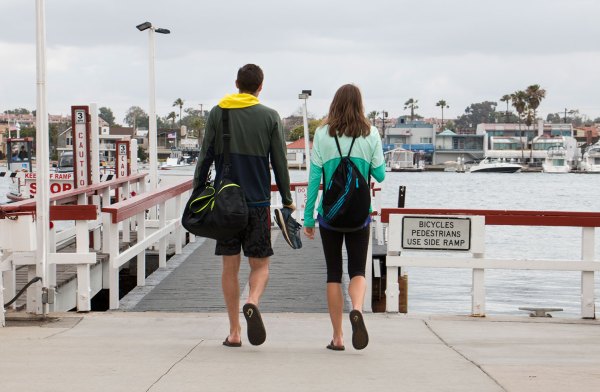
What you do before and after your activity of choice—whether that’s running, climbing, biking, surfing or something else—can seriously impact the speed at which you prepare for the next day’s activity. And that speed will impact your overall performance.
Kick Back and Relax
Most of the emphasis in training and recovery is spent on the training portion. While there are entire books and magazines dedicated to topic of training, comparatively little is published about the topic of recovery.
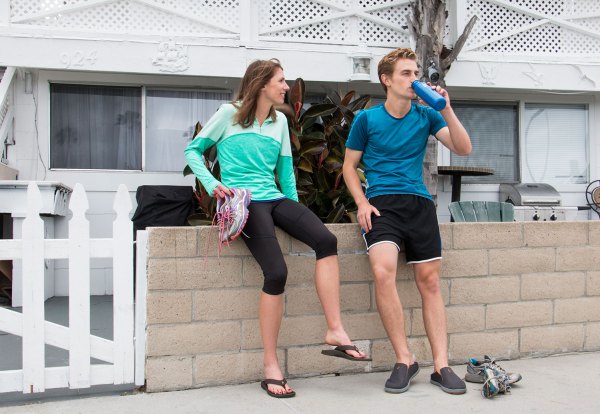
Yet, while recovery might not be as strenuous as training, it is equally as important for maximizing performance. Any post-workout ache or pain that happens because your foot is flopping around is just as debilitating as one that happens during a workout.
“Rest is crucial for training,” said Whistler-based fitness coach, snowboard coach, and mountain bike instructor JP Fok. According to Fok, what you do when you are not out training or performing matters.
While sleep, rest and nutrition are important in-between training sessions, Fok advises athletes to stay in motion with aerobic exercise. Use recovery days to focus on mobility and core movement.
Footwear’s Role in Recovery
For long-distance runner Tim Aukshunas, footwear choices are a big part of the recovery process. After his daily workouts, which often include five- and ten-mile training sessions, he kicks off his shoes and slides on a pair of sandals.
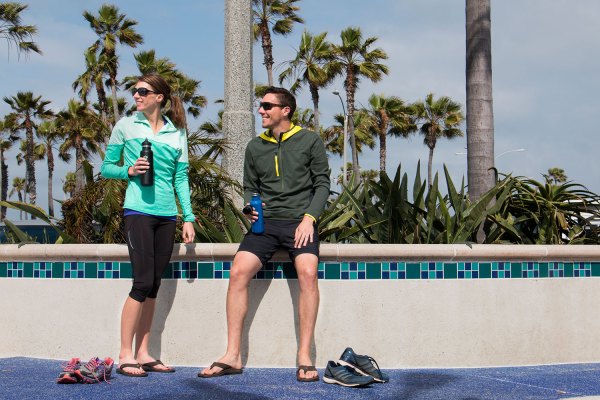
Yet not any sandal will do for Aukshunas. He looks for a product that will allow his foot to move freely but provide arch stability to his Achilles, while keeping pressure off the heel.
“You want to get right out of the training shoes used in your workout,” says Aukshunas, “and get into something that is supportive, but also allows for the toes to go into a natural range of motion.” He prefers structured footwear like OluKai’s ‘Ohana sandals over a product with a non-contoured footbed because of a concept known as the wet sand principle.
Dry sand may be soft and squishy, but it is unstable and leaves you prone to injuries. Many sandals on the market are like this: solely (no pun intended) made for comfort with little emphasis on stability for post-activity injury prevention.
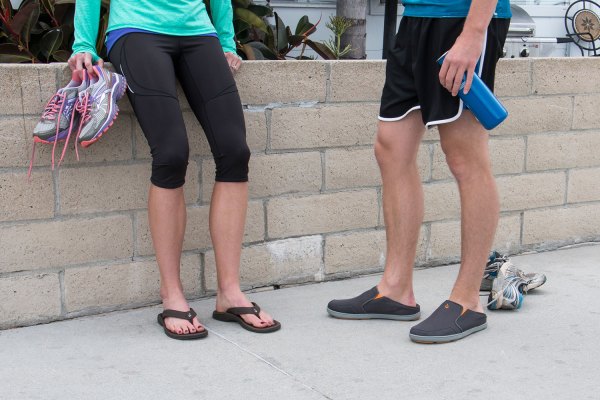
On the other hand, wet compact sand gives the feet and ankles structure and stability, both of which are crucial to preventing injuries. OluKai’s Nohea Mesh shoes take that concept a step further and add a layer of ankle support which further de-stresses activation on the back of the foot.
Training and Recovery: A Matter of Life or Death
For Hawaiian ocean sports legend Archie Kalepa, post-activity support sandals played a game-changing role in his training and recovery. Archie spent the early part of his career rescuing people off the rugged coast of Maui. For him, physical performance was the difference between completing a rescue and tiring out while out in open water.
“When we experienced the arch support, it allowed us to train for longer periods because we would recover faster,” he says, “It just enhanced the recovery process.”
In 1993, Kalepa and five other “beach boys” banded together to formalize an ocean rescue lifeguarding standard which today is known as the Rescue Ski Program. This program eventually led to the creation of the Hawaiian Lifeguard Association and serves as the foundation for many coastal lifeguard associations around the world.
For Kalepa and the Hawaiian Lifeguard Association, training and recovery is not just about becoming better at a sport; it is a matter of life and death.
The Hawaiian Lifeguard Association prepares their lifeguards for real life situations. While their training is highly regimented, an exercise may require a lifeguard to jump off a 20-foot cliff into crashing waves and swim for five miles to perform a practice rescue. Footwear is not always worn during these sessions but having the right footwear when needed allows the guards to train harder and for longer.
“Over time, if you train without arch support on your feet, it is going to take a toll on your body,” said Kalepa.
Recovering Like a Pro
Whistler-based Fok further stresses the importance of training, whether you are a professional athlete or an amateur who just likes to play outside. “The exercises that help you move better, faster and stronger are the same ones that guard you from injury,” says JP. “Sports are usually limited to very repetitive movements and body positions, so you need to spend lots of time moving in different planes of motion, too.”
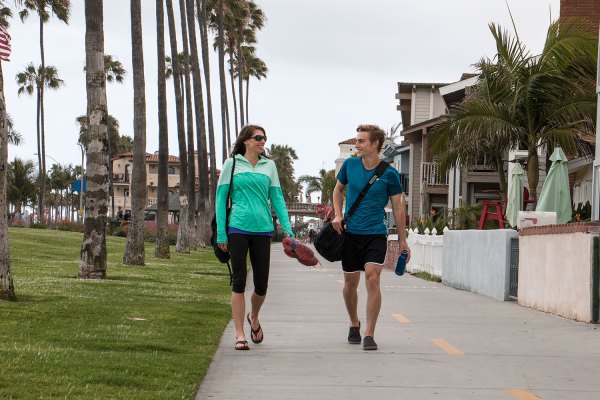
JP recommends these tips for recovering actively. First, refuel with food and water. (JP admits to indulging in a beer—but just one—after a solid day on his mountain bike.) Keep moving with aerobic exercise; walking is a good option, or you could take it to the next level with a heart-pumping spin class. Use rest days to focus on mobility and core exercises, and do not even think about skipping out on physio-prescribed exercise.
If training and recovery are not already part of your activity regimen, it is time to make some changes. Whether you are tackling Maui’s waves, conquering another marathon, or kicking up dirt on bike trails, focusing on what you do before and after your favorite activities will propel you to the next level. Remember: Train hard, but rest hard, too.
Photo credit: Spencer Sheerhan.
Story courtesy of OluKai.
